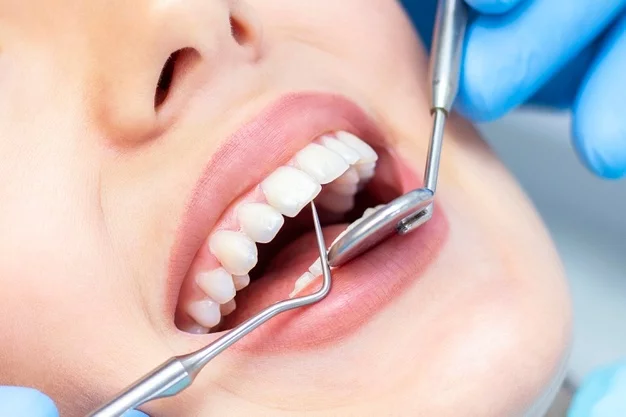Detoxing from methadone can be challenging, but it’s a necessary step for anyone looking to break free from dependence on this powerful opioid. Whether you’ve been prescribed methadone for pain management or as part of a treatment program for opioid addiction, detox from methadone is a process that requires patience, time, and support. Understanding what happens during the detox period and what withdrawal symptoms you might experience is crucial to helping you prepare. In this guide, we will walk you through the methadone detox process and the various withdrawal symptoms you might encounter along the way.
Understanding Methadone and Its Role
Methadone is a long-acting opioid medication often prescribed to help individuals manage pain or to aid in opioid addiction treatment. While it’s an effective tool for these purposes, long-term use can lead to dependence. This is why many people who are on methadone for extended periods find themselves needing to undergo detox when they decide to stop using the drug. Detox from methadone can be a tough experience, but with the right plan, it’s possible to minimize the discomfort and successfully overcome the addiction.
The Methadone Detox Timeline
The timeline for methadone detox is unique to each person and depends on several factors, such as how long you’ve been using methadone, the dosage, and your overall health. However, the typical detox process can last anywhere from several days to a few weeks. Here’s a rough breakdown of what you might expect during the detox period:
Days 1-3: Early Symptoms
The first symptoms of methadone withdrawal often appear within 24 to 36 hours after your last dose. Unlike short-acting opioids like heroin or oxycodone, methadone takes longer to leave your system, which means the onset of withdrawal is delayed. Early symptoms may include:
Anxiety
Sweating
Restlessness
Muscle aches
Yawning
These initial symptoms are often mild, but they can intensify as the detox continues.
Days 4-10: Peak Symptoms
The peak of methadone withdrawal typically occurs around days 4 to 7. During this phase, symptoms become more severe and may include:
Nausea and vomiting
Diarrhea
Chills
Insomnia
Intense cravings for methadone
This period can be the most difficult to manage, as the body is craving methadone, and the physical and psychological symptoms are at their peak. Many people also experience mood swings, irritability, and depression during this stage of detox.
Days 11-21: Decreasing Symptoms
By the end of the second week, many of the intense physical symptoms begin to subside, although some may linger. Psychological symptoms, like anxiety and depression, can persist longer and may require additional support through counseling or medication.
During this time, the body is starting to adjust to functioning without methadone. The cravings might lessen, but they may still pop up occasionally, especially during moments of stress.
Post-Detox (Weeks to Months): Long-Term Symptoms
While the most intense withdrawal symptoms tend to resolve within three weeks, some people experience what’s known as post-acute withdrawal syndrome (PAWS). This can last for months and may involve symptoms like:
Fatigue
Mood swings
Anxiety
Difficulty sleeping
Difficulty concentrating
It’s important to stay engaged in treatment and seek ongoing support during this phase, as the risk of relapse can still be present.
Managing Methadone Withdrawal Symptoms
Methadone withdrawal can be uncomfortable, but there are ways to manage symptoms effectively. Here are some common strategies used during detox from methadone:
Gradual Tapering
One of the most common methods for methadone detox is tapering, which involves gradually reducing the dosage over time rather than stopping suddenly. This allows your body to adjust slowly and helps minimize the severity of withdrawal symptoms. A healthcare professional will typically oversee this process to ensure it’s done safely.
FOR INFORMATIVE CONTENT VISIT.. : Christmas gifts
Medications
Certain medications can be prescribed to help manage withdrawal symptoms, such as:
Clonidine to reduce anxiety, agitation, and sweating
Buprenorphine to ease opioid withdrawal
Naltrexone to block opioid effects and reduce cravings
These medications are often used in conjunction with behavioral therapy for a more holistic approach.
Support Systems
Having a strong support system is vital during detox. Whether it’s through friends, family, or a formal treatment program, knowing you’re not going through the process alone can make a big difference. Many people also benefit from attending support groups like Narcotics Anonymous or seeking professional counseling.
FAQs About Methadone Detox and Withdrawal
Q: How long does it take to detox from methadone?
A: The detox process varies from person to person, but most people experience withdrawal symptoms for about 10 to 20 days. Some symptoms, particularly psychological ones, may last longer.
Q: Is methadone withdrawal dangerous?
A: Methadone withdrawal is not typically life-threatening, but it can be extremely uncomfortable. For this reason, it’s recommended to undergo detox under medical supervision to ensure safety and manage severe symptoms.
Q: Can I detox from methadone on my own?
A: It’s not recommended to detox from methadone without medical guidance, especially if you’ve been using it for a long time. Withdrawal can be challenging, and medical support can help ease symptoms and reduce the risk of relapse.
Q: Will I need medication during methadone detox?
A: Some people may benefit from medications to manage withdrawal symptoms, while others may be able to detox without them. Your doctor will assess your situation and recommend the best course of action.
Q: What should I do if I relapse?
A: If you relapse, it’s important not to lose hope. Many people go through multiple attempts before successfully detoxing. Reach out for support from a healthcare provider, counselor, or support group to get back on track.
Conclusion
Detox from methadone is a challenging process, but it’s a critical step toward achieving long-term recovery and breaking free from dependence on opioids. The withdrawal symptoms, while uncomfortable, are temporary, and with the right support and treatment, they can be managed effectively. Whether you’re tapering off methadone under medical supervision or seeking treatment through a detox program, knowing what to expect can help you prepare for the journey ahead. Remember, recovery is possible, and taking the first step toward detox is an important move toward a healthier, more fulfilling life.





